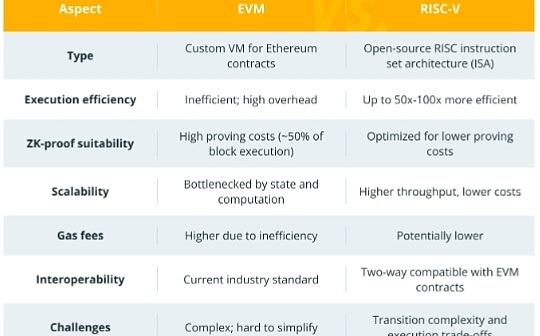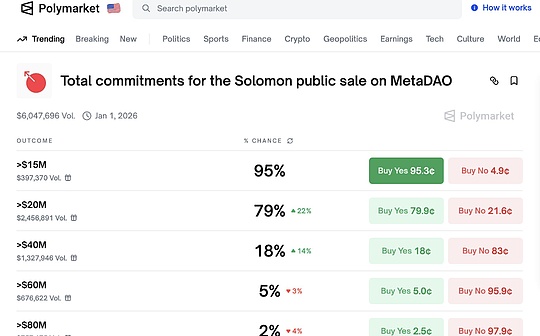
Author: Guneet Kaur, Cointelegraph; Compiled by: Deng Tong, Bitchain Vision
1. Understand offline pledge
Offline staking or cold staking is a technology that does not need to expose the private key of the staking token to the online network during the process of participating in a Proof of Stake (PoS) blockchain network.
Specific blockchain networks use PoS consensus mechanisms to verify transactions and protect the network.In a proof of stake system, validators are selected to create new blocks and verify transactions based on the number of tokens they hold and the number of willing “staked” as collateral.
By contrast, proof-of-work systems (such as Bitcoin) rely on miners to leverage their computing power to solve complex mathematical puzzles to validate transactions and generate new blocks.
Offline pledge and traditional pledge
In traditional staking, participants often actively participate in the consensus and verification process of blockchain by locking funds in an online wallet connected to the network.Offline staking, on the other hand, provides a new way to allow users to pledge their digital assets without being connected to the internet.
With offline staking, users can assign their staking tasks to third-party validators, also known as staking pools, while safely keeping their funds in cold storage.This key difference improves the security of offline staking as it minimizes the amount of funds that are threatened by any internet.
However, this also means abandoning some control and authority over decisions in traditional staking.Multiple variables such as technical capabilities, security choices, and the need for ongoing network participation affect the choice between offline and traditional stakes.
2. Security measures for offline pledge
Offline staking adopts various security measures such as cold storage and multi-signature wallets, ensuring strong security through regular updates.
Using cold storage is a common method that stores wallet data and private keys offline to reduce sensitivity to Internet threats.Hardware wallets are also widely used because of their security features, including providing physical devices with secure storage of private keys and protecting against phishing or malware attacks.
In addition, the isolation system provides additional security by limiting possible attack pathways and physically isolating from the Internet.Encryption keys and passwords must be securely generated and stored, which underscores the importance of secure initialization and setup programs.
Regular software updates are essential to maintaining security as they patch vulnerabilities and guard against known hazards.It is also crucial to monitor the activity of the pledged node and to promptly detect suspicious activities and possible security issues.
Using a multi-signature wallet requires multiple private keys for transaction authorization, which can improve security.Strong network security mechanisms, including firewalls, intrusion detection systems and virtual private networks, further strengthen the defense against external threats.In the event of an unexpected problem or hardware failure, access to the staked funds can be regained due to periodic backups of the wallet data and private keys.
In addition, it is emphasized that the use of secure channels for transactions and verification of wallet addresses is used to ensure the transfer of secure tokens from standard wallets to pledged wallets.By implementing these security precautions, participants can significantly reduce the risks involved in offline staking and protect their staking assets from any weaknesses and unauthorized access.
3. How does offline pledge work?
Offline staking is a blockchain-based process that allows cryptocurrency holders to participate in the consensus and verification process of the network without always keeping their assets online.
In this staking mechanism, the user provides it to a third-party staking node (usually run by a staking pool) to verify the transaction and generate new blocks.Its main innovation lies in the secure storage of private keys and offline pledge operations.
Participants reduced the likelihood of online hacking by storing their pledged assets in hardware wallets or cold storage options.Users must set up a pledged wallet and create a pledged node, including information about network connections and security settings, to start offline pledge.
In addition, participants indicated their pledge intention when transferring a certain amount of tokens from their regular wallet to the pledged wallet.At this time, the pledge node joins the consensus process.
Participants receive stake rewards for their participation, usually in the form of additional tokens.By reducing sensitivity to online risks, offline staking improves security and attracts users who want to earn rewards without sacrificing asset security.
4. How to allocate the reward for locking the warehouse in offline locking?
In offline staking, the allocation of staking rewards usually follows a predetermined protocol set by the blockchain network.
When users delegate their tokens to a validator, they contribute to the total amount of pledge controlled by that validator.Representing the principal, the verifier participates in the block generation and verification process.Validators receive part of the block reward for their work and entrusted staking contributions.
Subsequently, according to the specific reward allocation mechanism of the staking pool, the principal will receive offline pledge rewards.Typically, this model considers variables such as the total number of tokens for each participant and the duration of their pledge commitments.
Some networks use performance-based strategies that provide compensation to participants based on validators’ efficiency and successful block validation, while others may adopt a proportional allocation strategy, allocating payments to them based on the stake ratio of the principal.
5. Benefits of offline pledge
Offline staking offers several advantages, including enhanced security and convenience for cryptocurrency holders.
The enhanced security achieved through cold storage and the use of hardware wallets is one of the main advantages.Users limit exposure to online threats by pledging funds offline, thereby reducing the risk of hackers.
In addition, offline staking enables users to balance between earning rewards and protecting asset security by allowing users to assign staking tasks to third-party nodes.This approach provides users with freedom and convenience, allowing them to stake cryptocurrencies without the need for a continuous internet connection.
By allowing users to participate in consensus processes without the need to use high-energy mechanisms, offline staking helps achieve a more sustainable and environmentally friendly blockchain verification approach.This is in line with the growing global emphasis on the adoption of green and energy-efficient practices in the cryptocurrency sector.
6. Risks related to offline pledge
Offline staking provides enhanced security and flexibility, but there are also some potential risks, involving potential reward losses, demand for technical proficiency, and dependence on third-party nodes, which users need to consider carefully.
One issue that needs attention is the possibility of loss of staking rewards due to assigning tasks to unrelated nodes.To ensure reliability and fair reward allocation, users must carefully choose trustworthy staking pools or nodes.
Furthermore, the security of offline storage technologies such as hardware wallets or cold storage is crucial, as any damage to these devices can lead to the loss of pledged assets.Another issue is the complexity of setup and management, which requires technical expertise and may pose a barrier to less experienced users.
In addition, the overall effectiveness of offline staking strategies may be affected by the inability to respond quickly to staking parameters or changes in network upgrades.Despite these risks, offline staking remains an attractive option for those seeking a balance between security and passive income of cryptocurrencies by carefully considering and following best practices.








